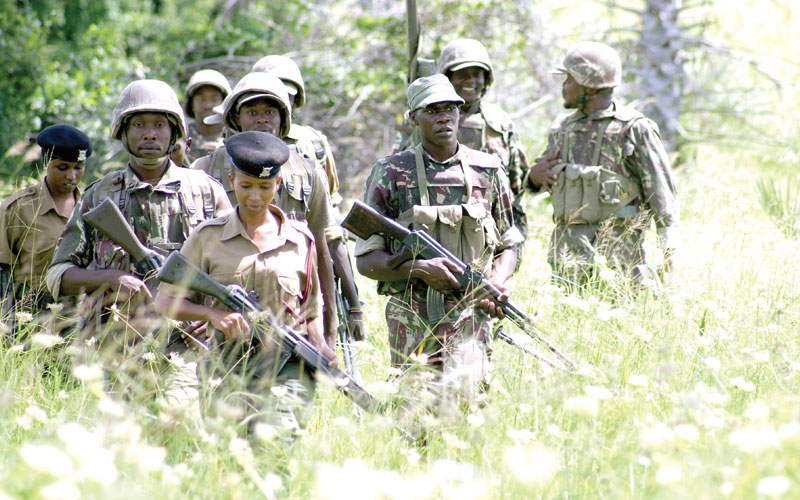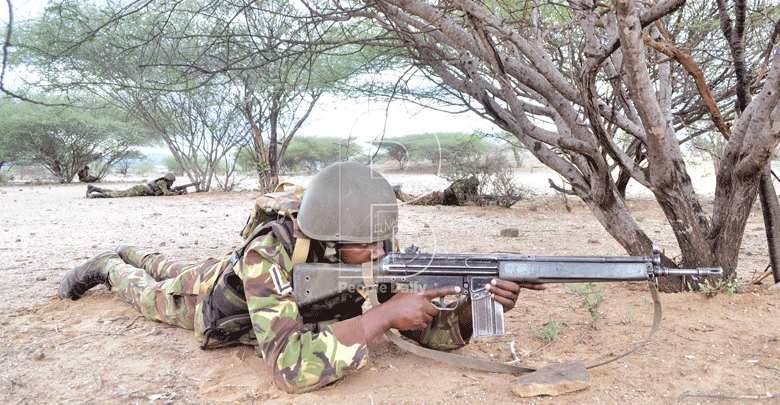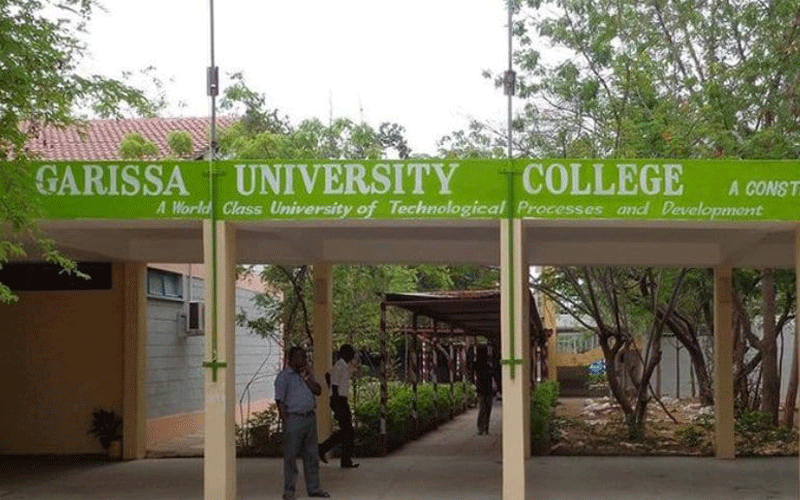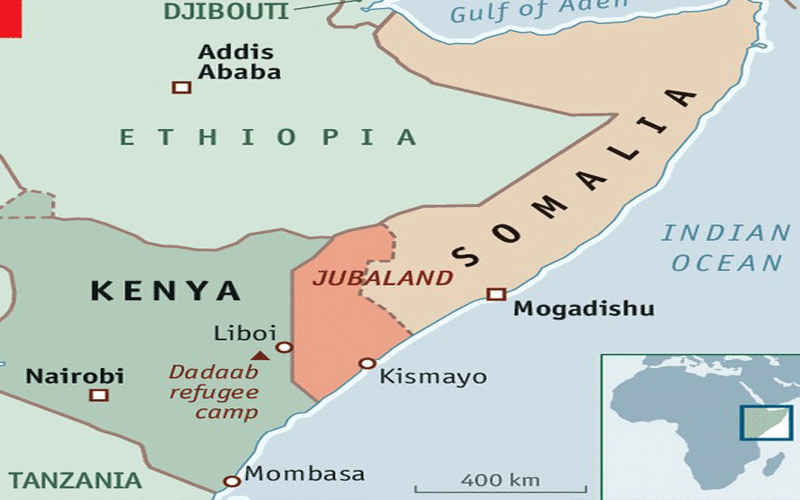Why Operation Linda Boni is in limbo

Reuben Mwambingu and Murimi Mutiga
It was expected to last 90 days. But nearly five years later, Operation Linda Boni that was meant to flush out al Shabaab insurgents from the Boni enclave, attacks continue.
Despite the hype and massive funding that the operation received, the Somali militants still control sections of Boni forest and have been using it as a hideout to launch attacks in Kenya.
The multi-agency operation has suffered from poor coordination, infighting between the military and the police, lack of appropriate fighting equipment and mistrust by the local community.
Security analysts say mounting fatalities have affected the morale of the military and police, with many who are deployed in the area considering it a punishment or a disciplinary measure.
Abdi Daib, a security consultant and lecturer at Kenyatta University, says Operation Linda Boni has failed because it was not well thought out.
“The operation was a knee-jerk reaction to the attacks by militia. It was not well planned and it is disheartening that we have continued to lose lives. We need to devise new ways of ending attacks by the ragtag militia,” said Daib.
Since the Kenya Defence Forces (KDF) entry into Somalia under Operation Linda Nchi in 2011, al Shabaab has intensified its retaliatory attacks in Kenya.
The militia has staged attacks in the Coast, Nairobi and North Eastern counties using explosives, gunfire, and even cases of horrific throat-slitting episodes.
On June 15, 2014, nine months after suspected al Shabaab militants attacked Westgate Mall in Nairobi, the militia struck Mpeketoni township in Lamu, killing more than 60 people in one of the bloodiest attacks the group has staged on Kenyan soil.
Shaky security
Citing Kenya’s intervention in Somalia, the assailants, estimated to be between 40 and 50, conducted multiple attacks in the area targeting government, security and financial installations and civilians.
Unlike previous attacks, the operatives were selective in picking their victims. Women and children were spared in the massacre in what security analysts said was a deliberate attempt by the militants to improve their image.
Since the Mpeketoni attack, the security situation in Lamu county has been shaky, prompting the government to launch Operation Linda Boni in 2015.
The operation, conducted by various security agencies, led by the KDF and the police, was launched by then Interior Cabinet Secretary Joseph Nkaissery (now deceased) with an objective of flushing out the militants said to be hiding deep in the forest.
The operation covers more than 10 villages stretching from the northeastern parts of Lamu all the way to the southern part of Garissa county, along the Kenya-Somalia border.
Recurrent raids by the militia have turned local villages into ghost homes as the gunmen scared away hundreds of residents from their homes in Busaba, Milimani, Manga, Mararani and Kiongewe.
The government claims the operation had restored peace but security sources and residents say the area has remained volatile.
Some families that had sought refuge in Bargoni, Mpeketoni and Malindi have not returned to their homes. Other families fled to Kiunga, Hindi, Mokowe and Lamu towns fearing for their lives.
Initially, some families would return occasionally to check their homes, until the militants devised new tactics; they planted improvised explosive devices (IED) on the road between Hindi and Kiunga, thus hampering movement of security personnel on the only road inside Boni forest.
Dozens of security personnel and civilians using the road have died after running over explosives.
Questions abound why the operation has failed to dislodge the militia from the area, more than four years down the line.
In September 2017, then Coast Regional Coordinator Nelson Marwa questioned the Boni operation during a press conference in Mombasa, saying it had taken too long to flush out the terrorists.
“We have the Operation Linda Boni in place. It is now almost two years and the way things are, it’s like we haven’t achieved the objective of flushing out criminals inside the forest…
How do militia find their way past our forces … to get into villages, kill people and go back into the same forest or cross the same borders where our KDF soldiers are?
We have enough airplanes and I wonder why most of them are just lying idle in the bases instead of being put out there to patrol these places,” he said.
In its early days, the operation was characterised by heavy presence of KDF soldiers on patrol and a series of roadblocks on the Malindi-Mokowe road. Passengers and motorists to and from Lamu would stop at the roadblocks for thorough inspection.
Strategic placement
Security forces and residents describe the Hindi-Bargoni-Kiunga road as a deathtrap because of IEDs.
From the air, the Boni forest canopy is dense, restricting aerial surveillance, and roads are few, limiting mobility of security forces. Al Shabaab’s strategic placement of mines and IEDs complicates efforts of security forces to infiltrate the forest.
In 2017, then Operations director Joseph Kanyiri appealed to civilians living in Boni forest to vacate and pave the way for KDF to launch airstrikes to flush out the militia.
Kanyiri, who has since left, observed that presence of civilians and livestock within the forest had been choking the flow of the operation.
Daib says continued presence of the local community inside the forest is one of the factors that hindered the operation.
“The government should have evicted all communities living in the forest so that security agencies can pacify the area. It has been difficult to fight the militia while we have civilians inside the forest,” he said.
Apart from mass killings, sometimes the militia cut off electricity and destroy telecommunication masts, in what security officers say is a way of ensuring that “life around here remains miserable”.
Mistrust between the police and military has also derailed the operation with both sides pulling in different directions.
Officials, who sought anonymity because of the sensitivity of the matter, said the military feel slighted by being made to work under the command of the county commissioner who is the designated head of Operation Linda Boni.
“This has worked against the whole aim of the operation. Sometimes police and military deployed there have not been sharing information and each agency has been working on its own instead of working as a team,” said an official.
Mastered routes
Lamu County Commissioner Macharia Irungu says residents have been slow in sharing information regarding movement of the gunmen.
“The operation is still ongoing, one of the challenges is sharing of information. The local communities are slow in sharing information,” he says.
Noting that the forest in vast, Macharia says al Shabaab are mobile and have mastered routes inside the forest to avoid coming into contact with security agents.
Some security officials suggest the militants are being provided with intelligence by sources within local communities.
Intelligence sources also say al Shabaab has recruited local people, because majority of them use Kiswahili of the Coast dialect.
This gives the militants an edge over security forces, which are often drawn from Christian inland communities and view the Muslim communities of the Coast with suspicion and distrust.
On the other hand, the operation seems to have lost favour with local communities who accuse the KDF and police of torturing them under the guise of extracting information.
Stories abound of residents of Mpeketoni being forced to roll and swim in ditches full of mud and sewage after being caught outside during the dusk-to-dawn curfew imposed in 2014.
“The military and residents have been living as enemies. Therefore, it has been difficult for residents to approach them and share information.
There is no security operation of such magnitude that can succeed without winning the hearts of the people first,” said Peter Maina, a former police officer based in Mpeketoni.
Another reason why the operation has not succeeded is lack of adequate equipment to tackle the enemy.
It has emerged some of the Chinese-made Armoured Personnel Carriers cannot be used to pursue militants inside the forest because they cannot withstand IEDs and rocket-propelled grenade attacks.










